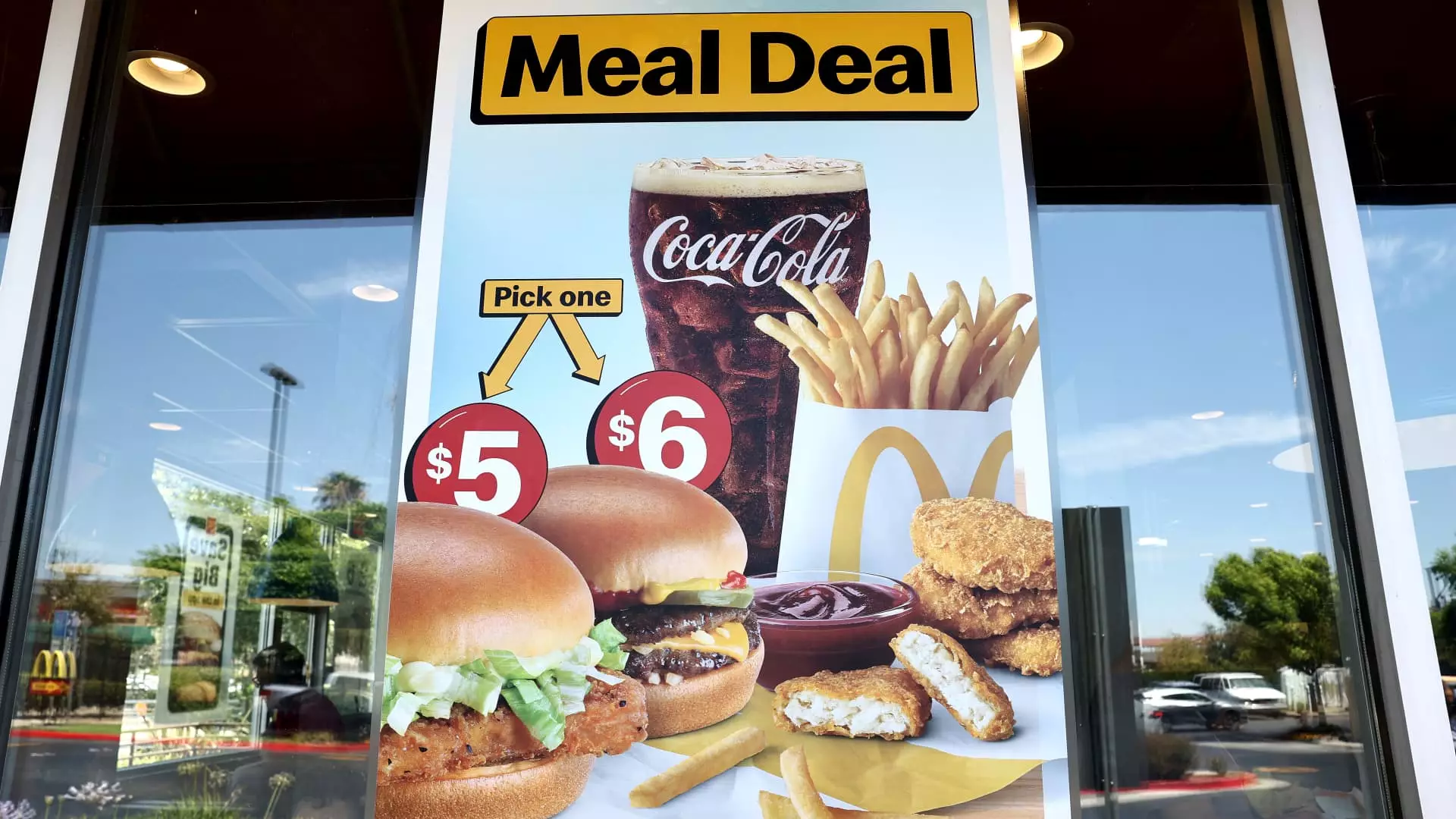Fast-food chains have been facing a challenging time in the market as they try to win back customers through $5 meal deals amidst rising menu prices and changing consumer behaviors. Subway discontinued its $5 footlong sandwiches a decade ago, but other chains like McDonald’s, Taco Bell, Burger King, and Wendy’s have recently introduced or revived meal deals at the $5 price point. However, the success of these promotions is questionable as investors are anticipating weaker sales and traffic footprints for many restaurant companies.
The rise in menu prices has led to a significant backlash among fast-food customers, including those from low-income backgrounds who constitute a significant portion of the consumer base. This shift in consumer behavior has also impacted the perception of fast-food chains on Wall Street, with shares of major companies like McDonald’s, Burger King, Wendy’s, and Yum Brands experiencing a decline. The casual-dining sector has managed to capture some market share from fast-food chains by emphasizing their value propositions.
Investors are particularly concerned about the long-term sustainability of $5 meal deals and the potential impact on profits. The fear of a “race to the bottom” in pricing strategies has further fueled skepticism among investors and franchisees alike. Franchisees, who often oppose discounts due to their negative impact on profitability, have gained more influence in recent years, pushing back against parent companies’ deal strategies.
The $5 meal deals are aimed at attracting customers and driving traffic to fast-food chains, especially during economic downturns and competitive market conditions. However, the success of these promotions depends on the ability to upsell customers with additional items to increase the average ticket value. Without effective upselling strategies, the discounts can erode profits and become unsustainable in the long run, raising concerns among investors and franchisees.
Subway’s experience with the $5 footlong deal serves as a cautionary tale for fast-food chains. While the promotion was popular with customers, it negatively impacted franchisee profits and contributed to other operational challenges. The prolonged presence of the deal led to store closures, disgruntled operators, and a prolonged struggle to regain customer loyalty.
Fast-food chains are facing a dilemma with $5 meal deals as they strive to balance attracting customers, driving traffic, and maintaining profitability. The current market conditions, consumer behaviors, and pricing pressures have created a challenging environment for the industry. The success of $5 meal deals hinges on effective marketing strategies, upselling techniques, and the ability to address the concerns of both investors and franchisees. As the competition intensifies and consumer preferences evolve, fast-food chains will need to adapt their pricing and promotional strategies to stay competitive in the market.

Leave a Reply